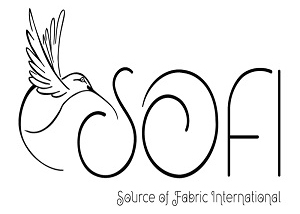Whether you’re a seasoned seamstress or just starting your fabric journey, finding the right place to buy clothing fabric can make all the difference. With countless options available, from local fabric shops to online retailers, the choices can be overwhelming. You want quality materials that inspire creativity and fit your budget, and knowing where to look is key.
Understanding Your Fabric Needs
Understanding your fabric needs serves as the foundation for successful projects. Determine what type of materials align with your goals and objectives.
Consider Your Project Type
Consider what you plan to create. Different types of projects require different fabrics. For clothing, opt for breathable materials like cotton for summer wardrobes and wool for winter attire. If you’re making home decor items like curtains or cushions, consider heavier fabrics such as canvas or upholstery textile. Quilting projects benefit from cotton quilting fabric, which provides the right balance of durability and flexibility. Additionally, think about whether the project demands stretchable fabrics, like spandex or jersey for activewear. Each project type guides the fabric choice, ensuring suitability and functionality.
Determine Fabric Weight and Texture
Determine fabric weight and texture to ensure comfort and functionality. Fabric weight affects the drape and feel of your final product. Lightweight fabrics, such as chiffon or voile, provide flowy styles. Mid-weight materials like denim or poplin balance strength with ease of use. Heavyweight options work well for structured designs. Texture also plays a critical role; soft fabrics like flannel offer comfort, while crisp materials like taffeta create structure. Recognizing your fabric’s weight and texture aids in selecting the right materials for your specific needs, contributing to project success.
Where To Buy Clothing Fabric
Finding the right place to buy clothing fabric involves exploring various options that align with your needs, whether you prefer shopping in-person or online.
Online Retailers
Online Retailers offer a vast selection of fabrics. Popular platforms include:
- Fabric.com: Features a variety of fabrics, from cotton to silk, and provides detailed descriptions and customer reviews. These reviews help gauge quality and usability.
- Joann.com: Sells a wide range of fabrics, sewing supplies, and frequently offers discounts. You can easily filter based on fabric type and usage.
- Mood Fabrics: Known for high-quality materials, Mood provides unique fabrics often seen on fashion runways. Their website has a user-friendly interface.
- Etsy: Hosts independent sellers offering unique and handmade fabric options. You might find exclusive patterns and materials not available elsewhere.
- Amazon: Lists fabrics from various sellers, ranging from basic cotton to specialty materials. Reviews and ratings allow for informed purchasing decisions.
Shopping online allows access to a broader selection and often lower prices, but consider shipping costs and delivery times. Make sure to order swatches when uncertain about fabric choices to better assess quality and texture.
Local Fabric Stores
Local fabric stores offer a hands-on shopping experience that can be beneficial for selecting the right materials for your projects. Visiting these stores allows you to see and feel the fabrics in person, ensuring they meet your project’s requirements.
Chain Fabric Stores
Chain fabric stores provide a wide range of options in various locations. Stores like Joann Fabrics and Hobby Lobby stock a variety of fabrics, including cotton, polyester, and blends. These stores often carry sewing notions such as threads and tools, making them convenient for one-stop shopping. Prices at chain stores frequently range from affordable to mid-tier, often depending on fabric quality. Look for weekly sales and coupons, as discounts can significantly lower costs.
In addition, chain stores typically offer online shopping with in-store pickup, enhancing convenience. Many of these locations host classes and workshops, beneficial for beginners or those wanting to learn new techniques. Visiting these stores allows discussion with knowledgeable staff, helping with questions about fabric selection and project advice.
Independent Fabric Shops
Independent fabric shops offer unique and high-quality fabrics that may not be found in chain stores. These shops prioritize specialty materials such as hand-dyed fabrics, organic cotton, and luxurious silk. Exploring independent shops often reveals local designers’ and artisans’ works, adding originality to your fabric choices. Prices tend to vary, with some specialty fabrics costing more due to their quality and craftsmanship.
Small shops usually provide personalized customer service; staff members often share insights and tips for your projects. Many independent fabric stores develop strong community ties, frequently hosting sewing groups or events to encourage creativity among crafters. Engaging with these shops can lead to discovering new techniques and trends in sewing and fabric use.
Fabric Markets and Fairs
Fabric markets and fairs offer vibrant environments filled with diverse fabric options. These venues showcase local vendors and artisans, providing unique materials for your sewing projects. Knowing where to find fabric markets and fairs enhances your shopping experience.
Research Local Markets
Research local fabric markets and fairs in your area. Check online resources like Google, social media, and local event listings for details. Look for dates and locations that feature fabric vendors. Many cities host seasonal markets, which promote local businesses and celebrate craft.
Plan Your Visit
Plan your visit by allocating specific days and times for attending. Many fabric markets operate on weekends, making them more accessible. Arrive early to beat crowds and get first choice on popular fabrics. Bring a list of items you need, such as specific fabric types or colors. This approach keeps you focused.
Bring Supplies
Bring essential supplies that aid in your shopping experience. Carry measuring tape to determine fabric lengths accurately. Bringing a notebook helps you jot down important notes regarding fabrics and vendors. A camera can capture fabric patterns or colors that catch your eye, serving as a point of reference later.
Explore Vendor Offerings
Explore vendor offerings thoroughly. Each vendor often has a unique selection, so don’t rush. Browse through various types of fabrics including cotton, linen, silk, and blends. Look for textures and patterns that align with your intended projects. Note prices as you compare different vendors for the best deals.
Engage with Vendors
Engage with vendors to gain insights into their materials. Vendors often possess extensive knowledge about the fabrics they sell. Ask about fabric origins, care instructions, and suitable project applications. Building rapport can lead to finding hidden gems or exclusive pieces not available elsewhere.
Networking Opportunities
Take advantage of networking opportunities at fabric markets and fairs. Connect with fellow sewing enthusiasts to exchange tips and ideas. Join discussions about projects or techniques, enriching your fabric shopping experience. Establishing connections may lead to collaborations or support groups for future projects.
Follow Up
Follow up with any vendors offering newsletters or social media platforms. Staying connected can keep you informed about future events, sales, or new fabric collections. Engaging with vendors online will ensure you don’t miss out on exciting finds.
Fabric markets and fairs deliver rich experiences for exploring fabrics. Utilize these strategies for an enjoyable and productive fabric shopping adventure.
Thrift Stores and Secondhand Shops
Thrift stores and secondhand shops offer unique opportunities for sourcing clothing fabric. These locations often stock a variety of fabric items including clothes, curtains, and other textiles.
Finding Fabric in Thrift Stores
- Visit Regularly: Check your local thrift stores frequently. Stock changes often, leading to new fabric possibilities.
- Look for Unused Textiles: Search for items that haven’t been worn, like sheets or tablecloths. These can provide a large amount of fabric for projects.
- Inspect Quality: Examine items closely. Look for stains, tears, or wear. High-quality fabrics enhance project outcomes.
Benefits of Shopping at Secondhand Shops
- Cost-Effective Options: Prices at thrift stores are typically low. You can find fabrics at a fraction of the cost of regular fabric stores.
- Unique Finds: Discover fabrics that are not commonly available. Vintage materials often provide distinctive looks for your sewing projects.
- Sustainable Choice: Buying secondhand supports sustainability. This practice reduces waste and minimizes the environmental impact of fast fashion.
Tips for Sourcing Fabric
- Bring a Measuring Tape: Measure the pieces of fabric you find. This ensures you procure enough material for your project.
- Be Open-Minded: Consider items in unconventional ways. A skirt can transform into a new dress or patchwork fabric.
- Check Fabric Content: Look at the tags if available. Knowing if the fabric is cotton, polyester, or another material helps in decision-making.
Engaging with Store Staff
- Ask for Help: Staff members often have knowledge about stock or upcoming sales. Engaging with them can lead you to hidden gems.
- Inquire About Fabric Donations: Some shops accept donations frequently. Getting to know staff can inform you of when new donations arrive.
Building Relationships
- Visit Community Events: Some thrift stores host events or sales. Participate to connect with other fabric enthusiasts and share valuable tips.
- Join Social Media Groups: Many communities have online groups discussing local thrift stores. These platforms can keep you updated on fabric finds.
Thrift stores and secondhand shops provide a bounty of fabric choices at lower prices. With a keen eye and an open mind, you can uncover remarkable, budget-friendly materials for your next sewing project.
Materials Needed
Gather necessary items before purchasing fabric to streamline your experience and ensure successful projects. Accurate tools and resources facilitate informed decisions, ultimately leading to better outcomes.
Fabric Swatches
Order fabric swatches from online retailers or visit local fabric shops to sample materials. Fabric swatches are small pieces of fabric that allow you to assess color, texture, and weight. Request multiple swatches for different materials to compare them side by side. This practice helps avoid mismatches during your project. Use a notebook or digital note to document your impressions of each swatch, noting attributes like softness, drape, and suitability for your specific projects. Take special care when choosing swatches for projects that require precise coordination, such as dresses or matching sets. Ensuring that fabrics complement each other in color and texture makes a noticeable difference in the final look of your clothing.
Measuring Tools
Acquire measuring tools to achieve accurate fabric measurements. Essential items include a measuring tape, ruler, and fabric scissors. Utilize a measuring tape to gauge your desired fabric length and width for different projects. A flexible measuring tape hugs curves, providing precise measurements for clothing that requires exact fitting. Incorporate a straight ruler for cutting and aligning fabrics accurately. Assess fabric grain by measuring along the grain line for better results when cutting. Invest in quality fabric scissors for clean cuts. Dull scissors may cause fabric fraying or uneven edges, making sewing challenging. Maintain tools by storing them properly and keeping them clean, ensuring they last for multiple projects.
Tips For Buying Fabric
Choosing the right fabric enhances your sewing projects. Follow these tips for an efficient shopping experience.
How To Choose Quality Fabric
Selecting quality fabric makes a significant difference in your sewing outcome. Inspect the fabric’s weight by holding it in your hands. Lighter fabrics like cotton voile work well for summer garments, while heavier fabrics like canvas suit home decor. Evaluate the fabric’s texture. Smooth materials like silk drape beautifully, while textured fabrics like denim lend structure to your designs. Always check for color consistency. Fabrics should match from the beginning to the end of the roll. Feel for any imperfections such as snags or uneven spots. A good fabric should be free of flaws. Consider the content of the fabric too. Natural fibers like cotton, linen, or wool tend to breathe better and provide comfort. Synthetics like polyester offer durability and wrinkle resistance. Before purchasing online, order swatches to test the fabric. Use this step to ensure the fabric meets your project’s needs before committing to larger quantities.
Negotiating Prices at Local Markets
Negotiating prices at local markets can lead to great deals. Focus on building a rapport with vendors to enhance your bargaining power. Begin by asking about the fabric, showing genuine interest. Vendors often appreciate engaged shoppers and may offer discounts to loyal customers. When discussing prices, be polite and respectful; this approach fosters goodwill. Always bundle purchases for potential savings. For example, if buying multiple yards, suggest a combined price rather than asking for per-yard discounts. Don’t hesitate to ask if the vendor offers any promotional deals or discounts for cash payments. Indicators like experience with local markets can help in negotiations, so keep that in mind. Research online to understand average pricing for similar fabrics. This information aids in discussing prices. Lastly, keep cash on hand, as many vendors may offer better deals for cash transactions.
Troubleshooting Common Issues
Shopping for fabric can sometimes lead to unexpected challenges. Addressing these issues efficiently keeps your projects on track.
What To Do If The Fabric Isn’t Available
If the desired fabric isn’t in stock, contact the retailer directly for more information. Some shops offer customized orders or can provide details about restocking schedules. Explore alternative fabrics that may serve the same purpose while still meeting your project requirements. Visit nearby fabric stores to uncover local options that may not have been on your radar. Check other online platforms you might not have considered, like smaller specialty shops or fabric trade websites. Consider swatches of similar materials to test colors and textures if a specific fabric remains unavailable. By staying adaptable and seeking out substitutes, you can find a suitable solution without delaying your project.
Dealing With Unreliable Online Retailers
When facing issues with unreliable online retailers, research customer reviews before making a purchase. If an order arrives damaged or incorrect, document the problem with photos and reach out to customer service immediately. Most reputable retailers offer returns or exchanges, so clearly explain the issue and request resolution. Look for alternative sellers if issues persist, focusing on those with strong reputations and proven customer service records. Check for secure payment options to protect your financial information. Understanding your consumer rights helps manage expectations and secure satisfactory outcomes. By being proactive and informed, you can mitigate risks associated with online fabric shopping.
Conclusion
Finding the right place to buy clothing fabric can elevate your sewing projects to new heights. Whether you prefer the tactile experience of local shops or the convenience of online retailers, there’s a wealth of options available. Remember to consider your project needs and budget when making your choice.
Engaging with fabric markets and thrift stores can also lead to unique discoveries that inspire creativity. By staying informed and building relationships within the fabric community, you’ll enhance not just your shopping experience but also your skills as a sewist. Embrace the journey of fabric shopping and let your creativity flourish with the perfect materials.
Frequently Asked Questions
What should I consider when buying fabric?
When buying fabric, consider the type of project you’re working on. Different projects require different fabric types, like breathable materials for clothing or heavier fabrics for home decor. Understanding fabric weight and texture is also essential, as they affect the drape and functionality of your final product.
Where can I buy fabric online?
You can buy fabric online from various retailers including Fabric.com, Joann.com, Mood Fabrics, Etsy, and Amazon. Each platform has unique advantages, such as customer reviews and a wide selection of products. Don’t forget to check shipping costs and delivery times for your orders.
Are there benefits to shopping at local fabric stores?
Yes, local fabric stores provide a hands-on shopping experience where you can see and feel fabrics in person. Many also offer classes and have knowledgeable staff who can assist you, making them a great resource for both beginners and experienced sewists.
What should I look for when visiting thrift stores for fabric?
When visiting thrift stores for fabric, look for unused textiles such as sheets or tablecloths. Inspect items for quality and be open-minded to unconventional materials. Also, consider bringing a measuring tape to ensure you have enough fabric for your projects.
How can I ensure I’m buying quality fabric?
To ensure you are buying quality fabric, inspect the weight, texture, color consistency, and fiber content. Ordering fabric swatches before purchasing larger quantities is a good practice, as it allows you to assess the material firsthand.
What challenges might I face when shopping for fabric?
Common challenges include unavailable fabrics and unreliable online retailers. If a desired fabric is out of stock, contact the retailer for restocking updates. For online order issues, document your problem and reach out to customer service for a resolution.
How can I negotiate fabric prices at local markets?
To negotiate fabric prices at local markets, build rapport with vendors and consider bundling your purchases for discounts. Being polite and informed about average pricing can enhance your bargaining power, making your shopping experience more cost-effective.
What tools should I gather before buying fabric?
Before buying fabric, gather necessary tools like measuring tapes and fabric scissors for accurate measurements and clean cuts. Documentation of impressions and notes on fabric swatches can also help you remember preferences and make informed decisions.


